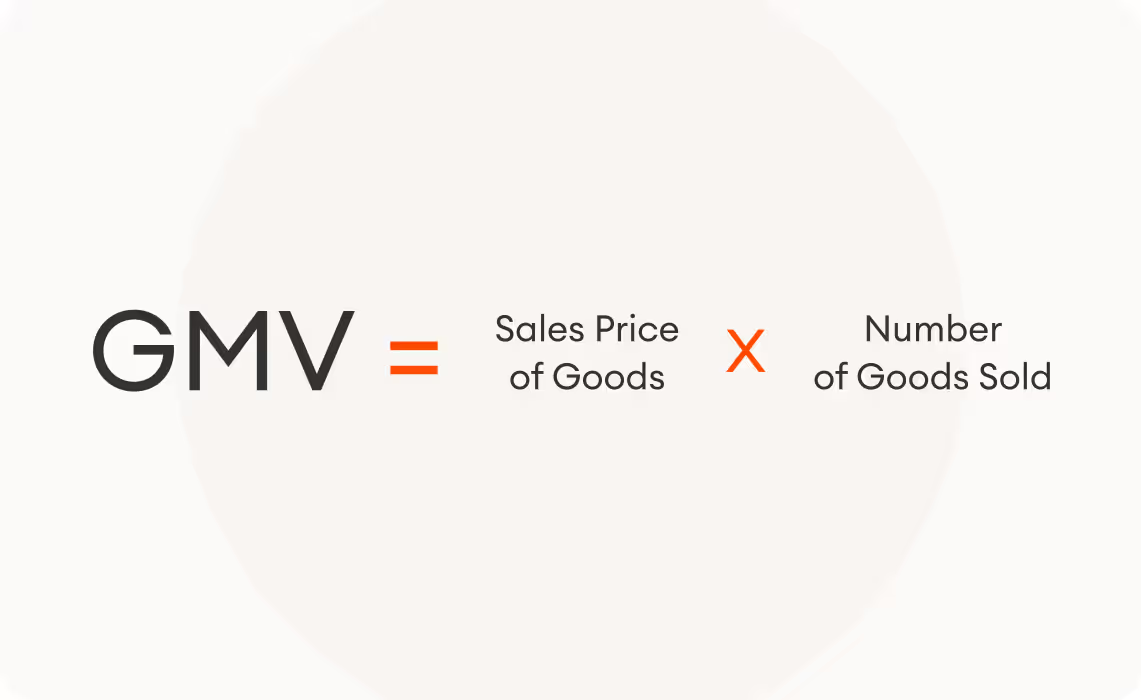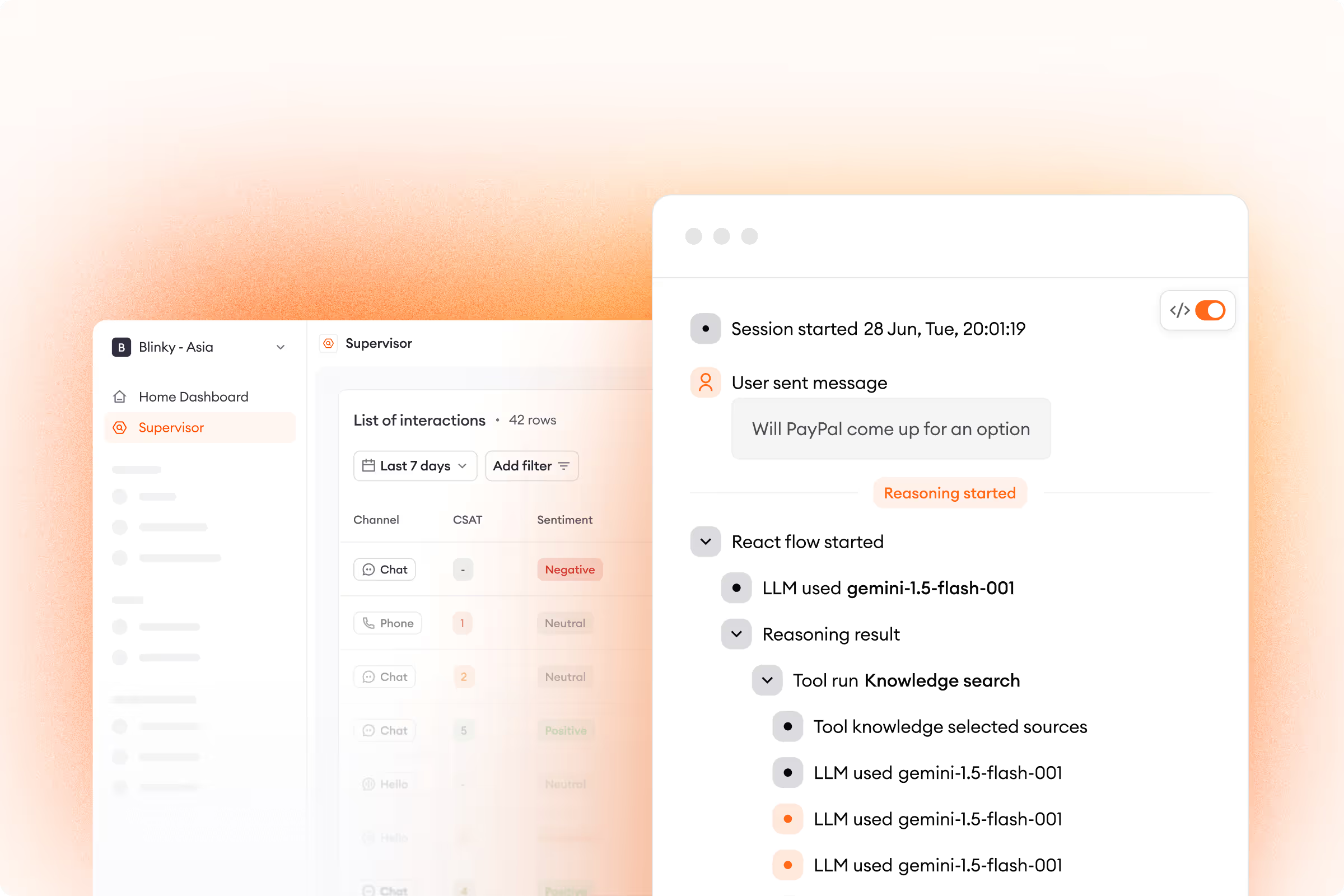So, you’ve been tasked with reviewing how successful your ecommerce site is. What do you check?
Profit? Sure. Revenue? OK. But a basic yet incredibly effective metric you should be tracking is gross merchandise value (GMV).
GMV is one of the top financial metrics to track when running an ecommerce store. Before you can try to improve yours, it’s vital to know what GMV means and how to measure it.
Not a corporate finance buff? Don’t worry. Below, you’ll get a simple definition, a basic formula, and 7 tips to increase it as a way to give your bottom line a major boost.
What is gross merchandise value (GMV)?
Gross merchandise value (also known as gross merchandise volume) is the total value of products sold on an online store or marketplace over a given period of time. However, GMV does not include costs such as returns on shipping fees.
Why does GMV matter in ecommerce?
While GMV is popular among customer-to-customer (C2C) businesses like eBay, it’s a valuable metric for tracking any ecommerce business’s performance over time. Following GMV allows you to quickly gauge sales performance, track growth, and make data-driven decisions on things such as inventory, pricing, and promotions.
For instance, once you know your GMV, you can better prioritize production and storage space for your high performers, and reevaluate your strategy for underperforming items — whether that’s reducing the price, cutting back on production, or discontinuing the product altogether.
Gross merchandise value is also simpler to calculate than other financial measurements like revenue or profit, so you’ll be able to quickly check your GMV whenever you need it.
How easy is it to measure GMV? We’re happy you asked.
How do you measure gross merchandise value?
To calculate GMV, multiply the number of goods sold by the sales price of those goods.

It’s up to you how often to measure GMV — monthly, quarterly, or yearly. But stay consistent. Gross merchandise value is a comparative measure, so to get an accurate idea of your total transaction value and how your GMV is changing, you’ll want regular intervals to look back on.
But remember, GMV does not include factors such as discounts, shipping costs, returns and refunds, taxes, or the operational costs of running a business (think overhead or advertising costs). While important, gross merchandise value alone isn’t a perfect metric and needs to be considered alongside your other KPIs like net sales or profit margin. Only then can you get a true indication of your business’s financial strength.
Discover all the ways customer service can boost GMV and drive sales in our free ebook, The Customer Service-Led Growth Playbook.
Example of GMV
Let’s look at an example of two hypothetical players in online retail. eAuction is an internet marketplace, while Heelz produces and sells footwear on its direct-to-consumer website.
In the first quarter of 2023, eAuction sold 100 items, each priced at $10. eAuction’s GMV for this period would be $10 x 100 = $1000.
Now, Heelz sold 75 products during that same time, each priced at $8. Heelz’s GMV would be $8 x 75 = $600.
eAuction has a higher GMV, but our example reveals why GMV alone can’t be used to measure online performance. As an online marketplace, eAuction doesn’t make all of the products it sells.
A chunk of the money it earns goes to third-party producers, while eAuction’s revenue is actually the fee it charges these businesses. So if Amazon charges a fee of 2%, its total revenue would be $1000 x 2% = $20.
On the other hand, Heelz sells its own products on its ecommerce website, meaning its revenue would still be $600, higher than eAuction’s.
These distinctions reflect how important it is to look at the big picture when observing GMV. By itself, it isn’t a sufficient representation of a business’s performance.
Common GMV questions
Here’s a quick rundown of the top questions you might come across concerning gross merchandise value:
What is the difference between GMV and revenue?
Any time you sell another company’s products and have to pay them a cut of your earnings, your GMV and gross revenue will differ. To calculate your revenue in this case, take your GMV and subtract all fees and expenses you have to pay to third parties. If you fall into this category, your GMV will always be larger than your revenue.
If, however, you sell your own products on your ecommerce site and you don’t have any such payments to make, your GMV and revenue are the same.
What is the difference between GMV and profit?
Gross merchandise value and gross profit will never be the same. To determine your profit, you subtract all of your expenses from your revenue. Common expenses include materials, wages, and even rent.
Since GMV doesn’t take expenses into account, it’s possible for ecommerce businesses to have a high GMV without bringing in any profit at all.
Does GMV include tax?
Gross merchandise value calculations don’t include any business expenses, including tax payments.
What is the difference between GMV and NMV?
Net merchandise value (NMV) is measured by subtracting all fees that a business needs to pay from its GMV. This includes refunds and marketing expenses that impact your customer acquisition cost. Since these fees are taken into account, NMV may offer a clearer picture of an ecommerce platform’s financial health.
What is the difference between GMV and AOV?
Last acronym — we promise. Average order value (AOV) shows the average amount each customer pays when they place an order in an ecommerce store. Calculate it by dividing revenue by the total number of orders. As you can see, AOV can be treated as a measure of GMV per customer, so it’ll always be smaller than your overall GMV.
Learn more about AOV and how to grow it in our blog post, 5 Ways You Can Leverage AI to Boost Your AOV.
How do you increase GMV?
If your GMV isn’t where you want it, there are several steps you can take to give it a boost. And you don’t have to manually try them out on your own. Leading AI-powered customer service automation solutions can simultaneously handle each of the following with ease.
1. Provide chat-first support
If your website visitors have a question, you want to respond as quickly as possible so they can continue shopping. Handle times over the phone reach 10 minutes on average, while email support usually needs 24 hours to respond. For either channel, customers enter a dangerous cooling-off period and can simply lose interest in their purchase or head to a competitor.
In contrast, chat can resolve customer queries instantly, ensuring buyers don’t have to pause their shopping journey. AI chatbots can even answer multiple questions simultaneously, eliminating frustrating queues. Chat can guide more customers to checkout than any other support channel, helping your GMV climb higher and higher.

2. Upsell/cross-sell
Your chat support isn’t there just to answer questions. It’s an advantageous spot to highlight additional products that customers should have on their radar. Recommend relevant products based on a customer’s questions and browsing history so they buy more items and boost your gross merchandise value. Even let shoppers know when they’re close to reaching your free shipping threshold and suggest related products they can tag onto their order with a single click.
3. Offer product bundles
Take upsells and cross-sells up a level with product bundles. Offer curated collections of complementary products that simplify shopping for new customers and repeat buyers alike.
Throw in different styles or colors of a T-shirt into a bundle, or pack different components of a cleaning kit into a single purchase. By making browsing more convenient, and even offering discounted prices, ecommerce companies can sell more goods and grow their GMV.
4. Give exclusive rewards
Give customers the VIP treatment and see how far your sales can grow. Let them redeem loyalty points, enjoy free shipping, and save money with personalized discounts. Show customers they aren’t just another number with white-glove service they’ll remember.
5. Reach out proactively
Customer service is traditionally reactive, meaning support teams have to wait for customers to ask a question before they offer assistance. Shake things up by offering proactive support, reaching out to customers with handy information at critical moments of the customer journey. For example, if a customer appears stuck at checkout, ping them with a chat message so they don’t abandon their cart.
6. Equip agents to act like product experts
Customer service solutions can do wonders for your gross merchandise value, but so can your customer service reps. Leading automation software puts your product catalog at their fingertips, so they don’t have to scroll through countless pages to answer a question or propose a certain product. Support agents can leverage this technology to act as brand ambassadors capable of closing sales all on their own.
7. Deliver a dynamite CX
Of course, we’ve saved the best for last. Boosting your GMV doesn’t have to be complicated — give customers an excellent customer experience (CX), and you’ll be rewarded with higher total sales. An improved CX is capable of raising revenue by 15% and growing conversion rates and customer lifetime value, indicating that shoppers take notice when shopping is efficient, convenient, and pleasant.
Go with customer service software that grows GMV
A higher GMV is great, but it shouldn’t be your end goal. Elevating all your ecommerce KPIs while delivering top-notch customer service are key steps to growing your ecommerce business.
And Zowie is exactly the AI-powered solution that can take your company to new heights. Custom-built for the ecommerce industry, our automation platform can turn your chat support into a revenue-generating machine.

.avif)







